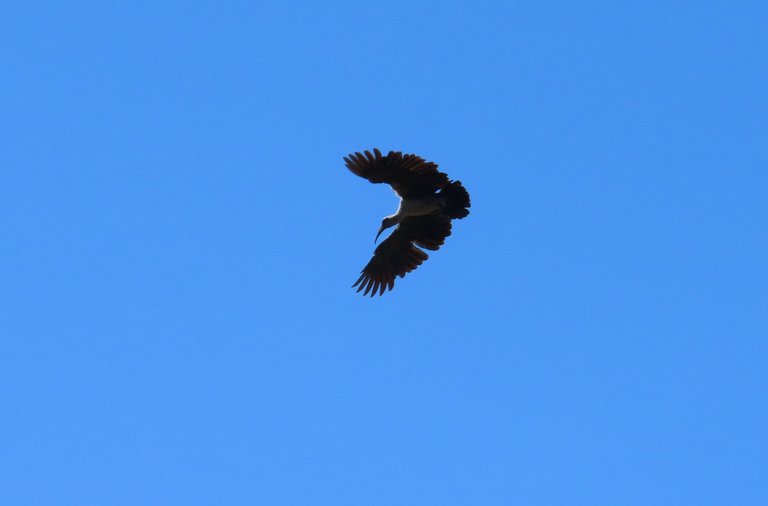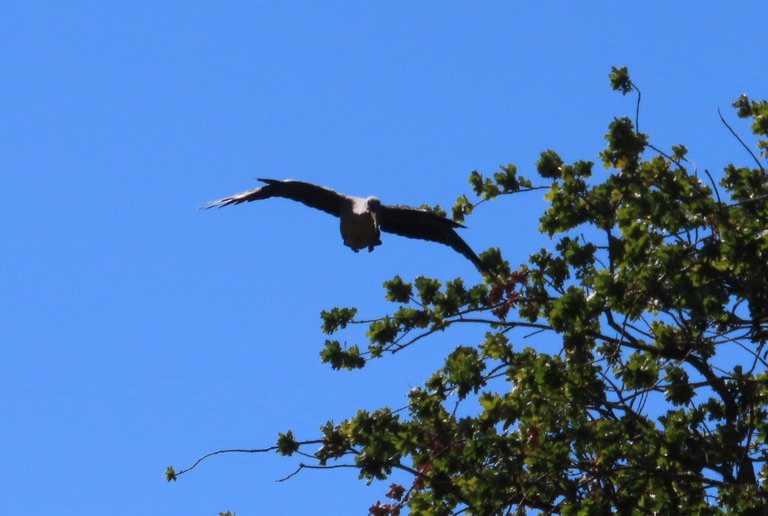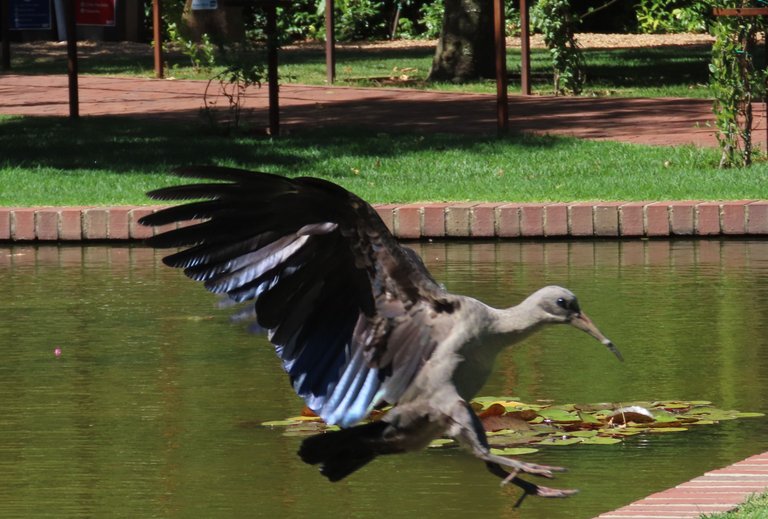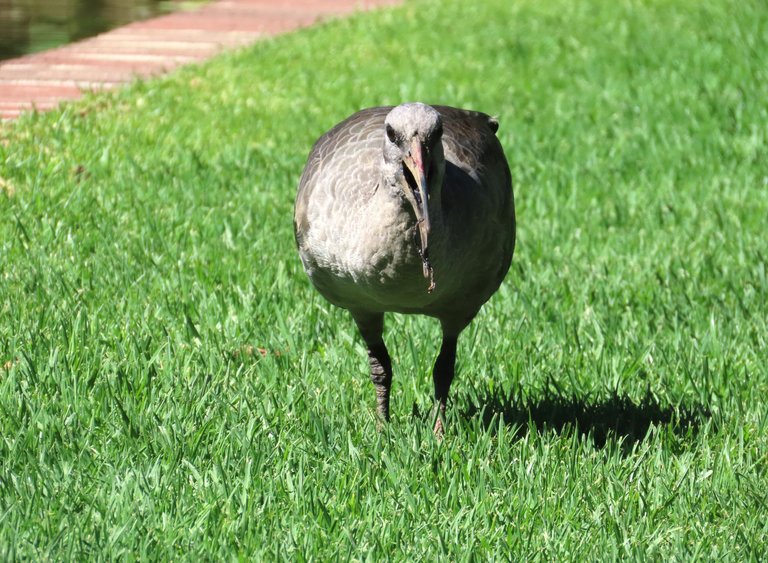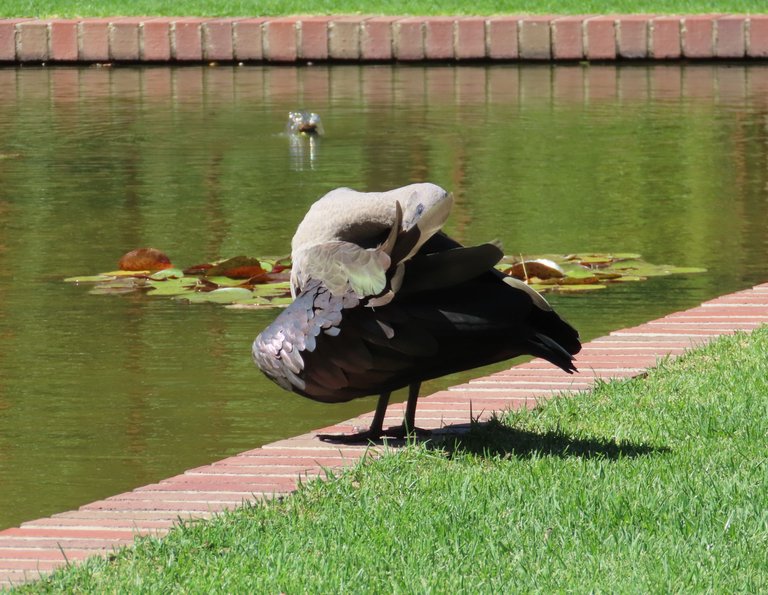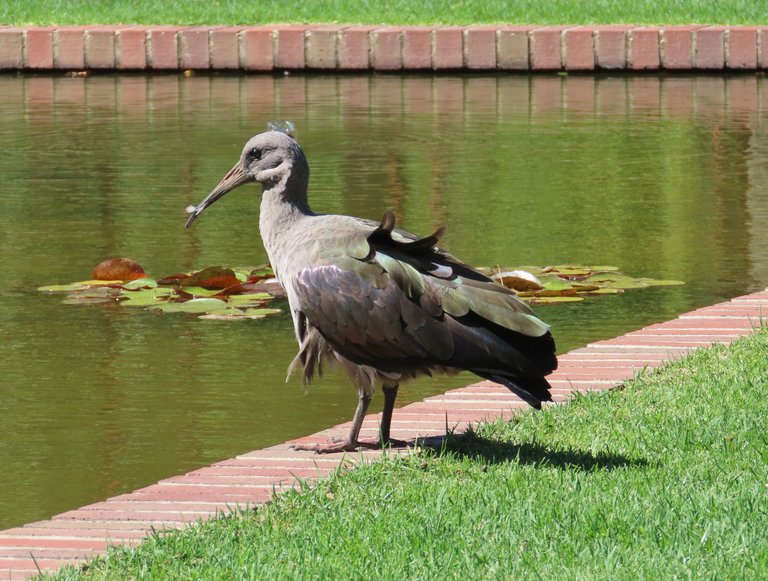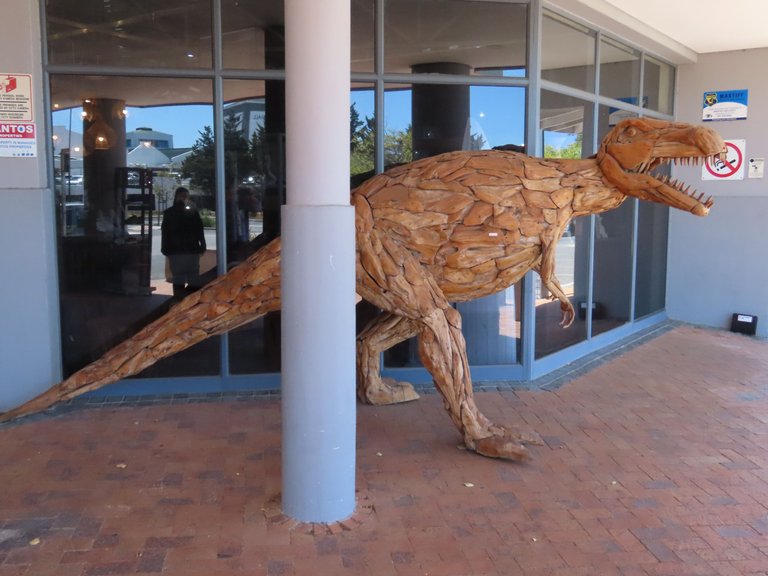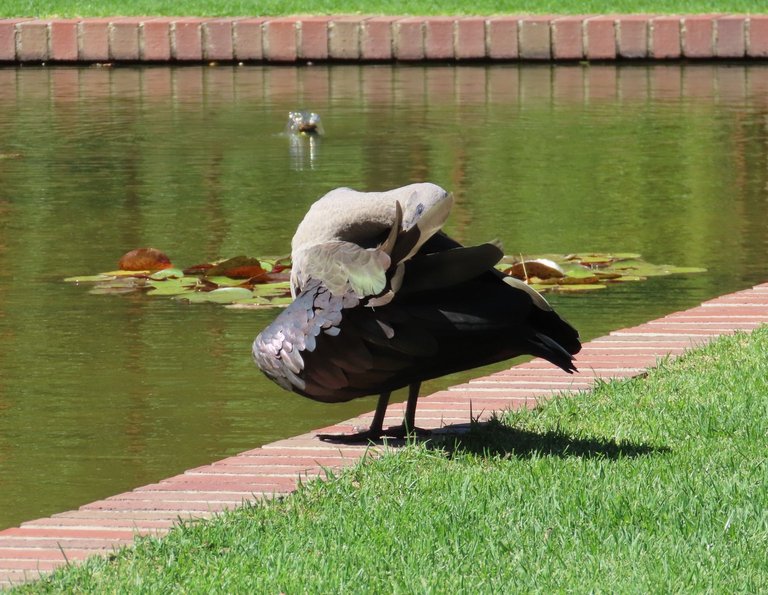Noisy birds when in flight, and I saw this one coming in to land.
The hadedas always remind me of prehistoric birds.
The hadada ibis (Bostrychia hagedash) or hadeda /ˈhɑːdiːdɑː/ is an ibis native to Sub-Saharan Africa. It is named for its loud three to four note calls uttered in flight especially in the mornings and evenings when they fly out or return to their roost trees. Although not as dependent on water as some ibises, they are found near wetlands and often live in close proximity to humans, foraging in cultivated land and gardens
Oh yeah, the hadeda was on its way down in my direction.
Screeeech! It hit on the emergency brake (we call it the hand brake in South Africa).
Turned to look at me and said; Now how was that old chap?
Here is something interesting in the way that the residents in other countries of Africa view the hadedas when they see them.
The calls of hadada ibises are considered as a sign of impending rains in parts of Lesotho. The Xhosa people use the name ing'ang'ane or ingagane which means black ibis as opposed to the white sacred ibis. The name in many African languages is onomatopoeic. It is known as Zililili in Chewa, Chinawa in Chiyao, Chihaha or Mwanawawa in Tumbuka, and Mwalala in Khonde. Colonial hunters considered it as a good bird for eating. The local people of Uganda have an origin story where a man and wife starved themselves during a drought while letting their children eat whatever little they had. The man and his wife were then turned into ibises that go by the name of Mpabaana. In Zululand the name ingqangqamathumba indicates that anyone who mocks the bird will break out in abscesses. When they fly continually, they are said to foretell a rich harvest in that year. A saying utahthisele amathole eng'ang'ane which means "he has taken the hadada's nestlings" is an idiom used to indicate that someone has offended a vindictive man and that he would have to be careful.
So, in the meantime, the hadeda did a bit of preening.
And as usual it was a windy day.
I took this shot of a dino sculpture, at a shopping center that we sometimes visit as it fitted in with my thoughts about the hadedas being prehistoric birds.
I regard myself (retired), as a photographic journalist that specializes in nature and charity work. We find an opportunity to go into nature as often as we can. Selfies and the other stuff are not my way of doing things, as nature is my forte. Not that I would insult the way that others do their thing, as we are all different. My blog is done in a photographic community to display my wares, as there are also many other nature lovers in the same community. Note that I am not a professional photographer, as my only desire is to show others the beauty of nature.
There are many other excellent photographers that blog on Hive, and it's a pleasure to see their shots. There is no other blogging platform that matches the creators on Hive, and a bonus of course is that one's efforts are rewarded. So, if you are a newbie, and a photographer, consider to learn from the established photographers on Hive.
I hope that you enjoyed the pictures and the story.
Photos by Zac Smith. All-Rights-Reserved.
Camera: CanonpowershotSX70HS Bridge camera.
Thank you kindly for supporting this post.
